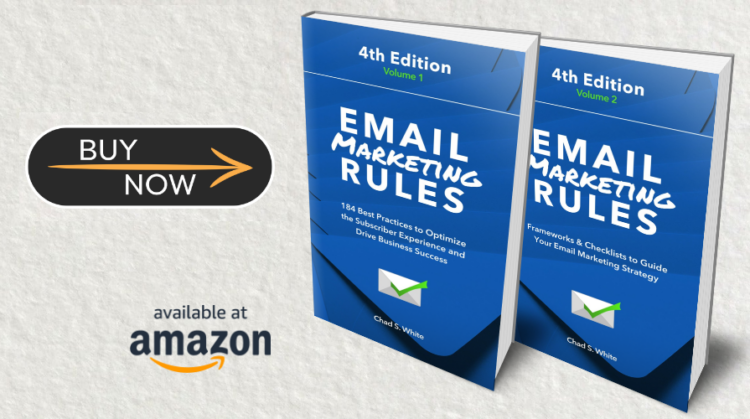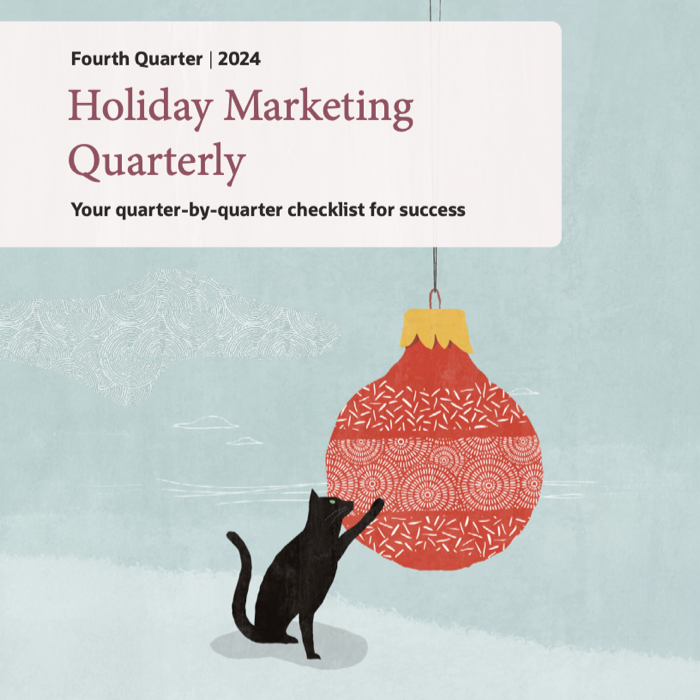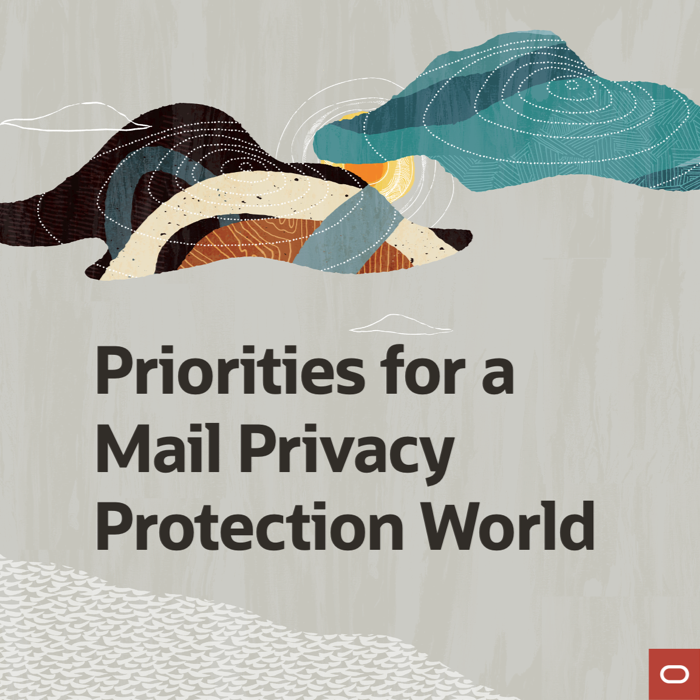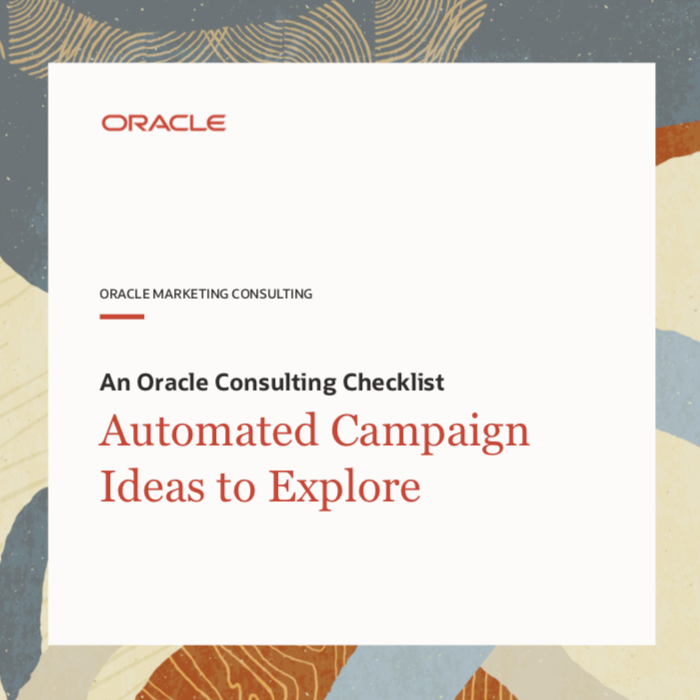More Insights on Birthday Email Programs
Posted on November 20, 2013
 Our Birthday Emails Infographic clearly showed that there’s a big opportunity for brands to collect birth dates and use that information to send triggered birthday emails. In this follow-up, I share five more insights from our research, which involved more than 180 B2C brands:
Our Birthday Emails Infographic clearly showed that there’s a big opportunity for brands to collect birth dates and use that information to send triggered birthday emails. In this follow-up, I share five more insights from our research, which involved more than 180 B2C brands:
- A lack of follow-up on birthday email offers.
- Too many birthday offers involved printing out coupons.
- Some brands promised birthday emails but didn’t follow through.
- Don’t ignore the other birthdays in your subscribers’ lives.
- Subject line trends from birthday emails.
>> Read the full post on the ExactTarget Blog
Exclusive #DF13 Book Giveaway: Get Your Copy of “Email Marketing Rules”
Posted on November 18, 2013
 In celebration of Dreamforce 2013 and the Salesforce ExactTarget Marketing Cloud, Salesforce is providing complimentary copies of my book, Email Marketing Rules, to attendees of any email marketing session during Dreamforce. Copies will be on the seats when you enter the session or available at the end of the session as you exit.
In celebration of Dreamforce 2013 and the Salesforce ExactTarget Marketing Cloud, Salesforce is providing complimentary copies of my book, Email Marketing Rules, to attendees of any email marketing session during Dreamforce. Copies will be on the seats when you enter the session or available at the end of the session as you exit.
Through 108 easy-to-understand rules, Email Marketing Rules is your guide to understanding the practices that lead to spectacular email marketing results, while steering you clear of trouble. Youtility author Jay Baer calls it “the best book ever written about email marketing,” and Internet Retailer Magazine says it is “a must-have for any email marketer.”
So don’t forget to grab your copy of Email Marketing Rules and also be sure to check out my session, “Marketing Cloud: The Good, the Bad and the Best Email Practices,” on Wednesday at 2:30, as well as all the other great email marketing sessions at Dreamforce.
2 Key Techniques for Making Email Content More Mobile-Friendly
Posted on November 11, 2013
 On the sliding scale of mobile-friendliness, most brands are just starting to get a grip on the fundamentals of email content design. In fact, ExactTarget research performed in early October found that out of nearly 160 B2C brands — including retailers, restaurants, manufacturers, travel and hospitality companies, and nonprofits — only 12% use responsive email design and 10% use mobile-aware design, while the remaining 78% still use largely desktop-centric email designs.
On the sliding scale of mobile-friendliness, most brands are just starting to get a grip on the fundamentals of email content design. In fact, ExactTarget research performed in early October found that out of nearly 160 B2C brands — including retailers, restaurants, manufacturers, travel and hospitality companies, and nonprofits — only 12% use responsive email design and 10% use mobile-aware design, while the remaining 78% still use largely desktop-centric email designs.
Here’s a breakdown of the three major gradations of mobile email design and where the industry is with each of them…
>> Read my entire article on the Content Marketing Institute Blog
3 Things that Are Already Different About This Holiday Season
Posted on November 5, 2013
 Every holiday season is a little different when it comes to retailers’ email marketing. Here are a few things that are already different about this year’s:
Every holiday season is a little different when it comes to retailers’ email marketing. Here are a few things that are already different about this year’s:
Stronger Holiday Messaging Early
After late-July’s “Christmas in July” messaging, there’s a long break before retailers start sending significant holiday messaging again in September. This messaging tends to be banners and other secondary messaging. However, this year starting in late September there was a noticeable trend toward retailers sending full, dedicated emails about the holiday season. This trend continued into October, when…
>> Read my entire Email Insider column on MediaPost.com
Oct. 2013 B2C Email Volume Rises: Retailers Sent 17.8 per Subscriber, Non-Retailers 6.1
Posted on November 4, 2013
 During October, retailers sent each of their subscribers 17.8 promotional emails on average, up 9% from September. Non-retailers sent each of their subscribers 6.1 promotional emails on average, up 1% from the previous month.
During October, retailers sent each of their subscribers 17.8 promotional emails on average, up 9% from September. Non-retailers sent each of their subscribers 6.1 promotional emails on average, up 1% from the previous month.
This data is based on the anonymous tracking for more than 150 B2C brands, including retailers, restaurants, manufacturers, travel and hospitality, political groups, and nonprofits.
Among retailers, increases in per subscriber email volume were driven by the ramp up to the holiday season, which is now officially underway with the arrival of November. For more on seasonal email marketing trends, check out the Email Marketing Holiday Calendar and this month’s update on the ExactTarget Blog…
>> Email Marketing Holiday Calendar 2013: November Preview & October Review
The Last Word on October 2013
Posted on November 1, 2013
 A roundup of articles, posts, tweets and emails you might have missed last month…
A roundup of articles, posts, tweets and emails you might have missed last month…
Must-read articles, posts & whitepapers
“Free” is not a Dirty Word (and 4 other Subject Line Findings) (Return Path)
The Current State of Mobile 2013 Q3 (Spectacular Stats) (The Mobile Marketer)
The Email Design Conference 2013 San Francisco — 30 Email Dev Tips from Strangers! (Dev Tips For Designers)
Email Beats Social Networks for Online Offer Sharing: Study (AdAge)
There’s more love for marketing emails than you think (Smart Insights)
Infographic: Consumers’ Love-Hate Relationship with the Shopping Cart (DM News)
8 effective email marketing strategies, backed by science (Buffer)
Christmas and holiday email marketing 2013 (Smart Insights)
Don’t Let Holiday Hysteria Harm Your Email Program in 2014 (ClickZ)
Insightful & entertaining tweets
@jesuisandrea: Love this quote from @cstudabaker @litmusapp #TEDC13 pic.twitter.com/CHUCfDlViX
@trendlinei: Columbia goes responsive, more retailers are coming around… http://t.co/uM55nETi9w
@emailrocks: “I don’t care about big data – we can’t even do small data right” via @mitchjoel #LCMC13
@somniphobe: Smarketing may be my favourite new word. – @jaybaer #lcmc13
@StephanieSAM: Whatever phone your CEO owns, test that one for #emailmarketing rendering. Good advice from Wacarra @Responsys #DMA13
@Sam_CMUK: Things I never thought I’d witness: A round of applause for styled ALT text! #TEDC13
Great additions to the Email Swipe File pinboard
Best of the Best email sent on 8/19/13 >> View the pin
Warby Parker email sent on 10/24/13 >> View the pin
Apple email sent on 10/24/13 >> View the pin
Kiva email sent on 10/10/13 >> View the pin
Noteworthy subject lines
FansEdge, 10/31 — The Red Sox are World Series Champs!
Tiffany & Co., 10/28 — Discover the New Tiffany.com
Staples, 10/20 — The new staples.com is HERE!
GameSpot, 10/10 — See the new GameSpot
Saks, 10/9 — Now Online! Shop saksoff5th.com
Home Depot, 10/31 — Updates for the Holidays | From Boring to Blissful
Sephora, 10/29 — A girl can dream: GIFTaculars
SkyMall, 10/25 — Have You Thought Much About the Holidays? Save 15% Today!
Restoration Hardware, 10/25 — Our Holiday Gift Collection. 150+ Pages of Curated Gifts.
Crate & Barrel, 10/21 — Our Christmas ornaments are here.
The Container Store, 10/20 — Our Gift Wrap Wonderland is HERE!
Pier 1 Imports, 10/18 — Sparkle: Now available in small, medium and large.
Banana Republic, 10/18 — A sneak peek at holiday style.
Tiny Prints, 10/13 — Order Holiday Cards Early, Save 20% + Free Shipping
Michael’s, 10/12 — Learn How to Make the Perfect Holiday Gift
Neiman Marcus, 10/8 — The Christmas Book is here
Chili’s, 10/14 — Support the Movement. Thank a Veteran Today.
Boston Market, 10/4 — A special offer for Military and Federal employees!
Banana Republic, 10/12 — Fall favorites for 9 to 5 to 9.
REI, 10/1 — Meet Our New CEO, Jerry Stritzke
Victoria’s Secret, 10/29 — It’s on! #SecretRewardCard
Lenovo, 10/10 — A #betterway arrives Oct 30
Zulily, 10/1 — #trending now: Ava Loves Olli, and more
Most popular posts on EmailMarketingRules.com last month
1. The Many Uses (and 2 Drawbacks) of Animated Gifs
2. Are You Giving Those Who Unsubscribe the Cold Shoulder?
3. Happy Birthday, Dear Subscriber #Infographic
4. The One-Two Punch of Subject Lines and Preheaders
5. B2C Brands Sent Subscribers 13.1 Emails on Average during September 2013
iOS 7 Calendar Quirk Affecting Some Subject Lines
Posted on October 31, 2013
 Making sure marketing emails look and perform well on mobile devices has never been more important. And that’s a goal that can be challenging when there are often small, unannounced changes in email clients.
Making sure marketing emails look and perform well on mobile devices has never been more important. And that’s a goal that can be challenging when there are often small, unannounced changes in email clients.
I recently spoke with Bill Siwicki of Internet Retailer about a quirk in Apple’s new iOS 7 that occasionally converts portions of subject lines into calendar events links—sometimes accurately, sometimes not.
>> Read the full story at InternetRetailer.com
6 Ways to Get Email Marketing Rules
Posted on October 30, 2013
 There are several ways that you can get Email Marketing Rules, including a few that let you get it at a discount or even for free.
There are several ways that you can get Email Marketing Rules, including a few that let you get it at a discount or even for free.
1. Paperback
We may live in the digital age, but the paperback version of Email Marketing Rules outsells the electronic version by roughly 3 to 2. >> Get the paperback
2. Kindle Book
The digital version of Email Marketing Rules can be read on any smartphone, tablet or computer by downloading the free Kindle Reading App. >> Get the Kindle Book
3. New Kindle MatchBook
If you have previously purchased the Email Marketing Rules paperback from Amazon, Kindle MatchBook is a brand new feature that allows you to purchase the ebook version for just $1.99. >> Learn more about MatchBook
4. Borrow Books with Amazon Prime
If you are an Amazon Prime member, you can borrow the Email Marketing Rules ebook from the Kindle Owners’ Lending Library for free. >> Learn more about borrowing ebooks
5. Kindle Book Lending
If you own the Email Marketing Rules Kindle Book, you can lend it to another reader for up to 14 days. >> Learn more about ebook lending
6. Bulk Orders of Paperbacks
If you want to order 20 or more Email Marketing Rules paperbacks for an event or training program, I can offer you a discount by ordering direct from my publisher. >> Connect with me on LinkedIn about a bulk order
Gmail’s New Inbox: What’s your Strategy? #Webinar
Posted on October 23, 2013
 There has been a lot of talk about and a lot of hand-wringing over the debut of Gmail’s new tabbed inbox this summer. Now that the dust has settled a little, join Jeremy Bromwell, ExactTarget’s Senior Marketing Consultant, and me on Nov. 14 at 2 pm ET to hear the latest research findings and our advice on how data will help you understand potential challenges, develop a strategy, and present recommended actions. Also learn from one of our clients on how they’ve built their strategy to tackle Gmail’s new tabbed inbox.
There has been a lot of talk about and a lot of hand-wringing over the debut of Gmail’s new tabbed inbox this summer. Now that the dust has settled a little, join Jeremy Bromwell, ExactTarget’s Senior Marketing Consultant, and me on Nov. 14 at 2 pm ET to hear the latest research findings and our advice on how data will help you understand potential challenges, develop a strategy, and present recommended actions. Also learn from one of our clients on how they’ve built their strategy to tackle Gmail’s new tabbed inbox.
Can’t attend the webinar? Register and we’ll make sure you get a copy of the webinar recording.
 Email Marketing Rules
Email Marketing Rules








































